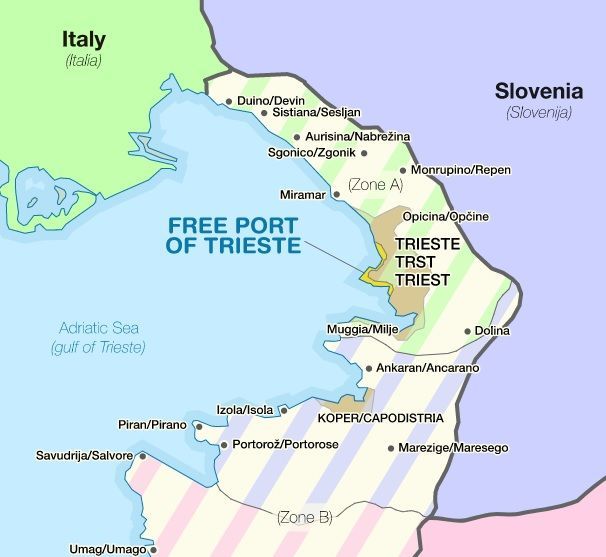On 6 July 1946, several hundred young supporters of Yugoslavian ruler Tito demanded that Trieste and the Istrian peninsula be ceded immediately to Yugoslavia, and they stoned Allied military police.
The question of state ownership of the Istrian peninsula and the port of Trieste was one of the intractable territorial issues after the Second World War. The issue was complicated by Josip Broz Tito's government concluding the Treaty of Friendship, Mutual Assistance and Post-War Cooperation with Moscow on 11 April 1945. The problem from a bilateral border dispute between Yugoslavia and Italy became one of the first Cold War trouble spots. Tito skilfully manoeuvred, criticising both the US and the USSR, but not naming either of the great powers directly: “We do not wish to pay other people’s debts, or to serve as small change in bargains between them; we will not be mixed up in the politics of spheres of interest”.
The speech angered Stalin, but to refuse aid to Tito would mean ceding to Washington, which was out of the question. Tito did not dare attack the Allied forces, and the US could not withdraw, realising that Trieste would be immediately overrun by Yugoslavia. At the sessions of the Council of Foreign Ministers in Paris, the Soviets sought the transfer of the western part of the Istrian peninsula, including the city of Trieste, to Yugoslavia. In Trieste, there was constant unrest over this.
However, the discussion on Trieste failed to produce a solution acceptable to all, and during the New York session of the Foreign Ministers' Council in November 1946 - when the parties again failed to reach a mutually acceptable solution - US Secretary of State James Byrnes informally visited the Ritz Hotel where Soviet Foreign Minister Vyacheslav Molotov, and said to him: “Having analysed the whole situation, I think it is wiser for all to admit failure and adjourn our meeting.” In doing this, Byrnes managed to highlight how ungratefully Yugoslavia was behaving to the USSR.
Nevertheless, neither side ever made a concession. Trieste remained the so-called Free Territory of Trieste until 1954, under the control of the Anglo-American military authorities, and then it and the territories to its north passed to Italy, and the territories to Trieste’s south went to Yugoslavia. After Yugoslavia collapsed, it was divided between the Slovene Primorje and the Croatian Istarska Županija ("Županija" – local administrative-territorial unit).
Source: Anatoly Anikeev, “Yugoslavia in the European Politics of the Great Powers during the Cold War (the late 40s – early 50s)” // Slavic Studies, No. 5, 1992.
























